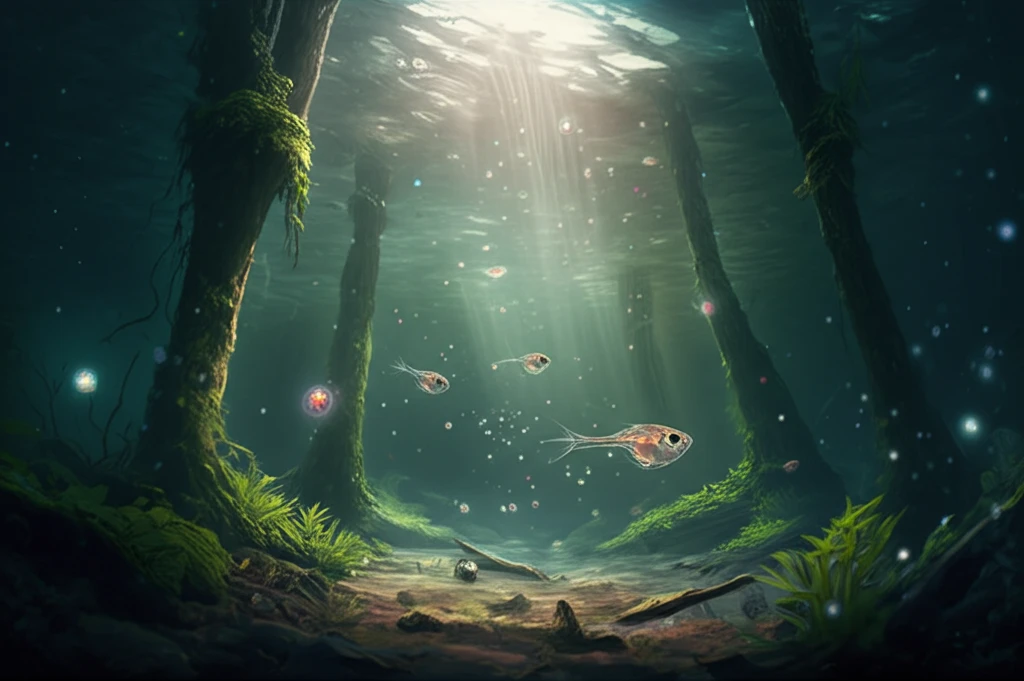
Decoding the Twilight Zone: How Light Affects Fish Larvae Behavior
"Unlocking the secrets of fish larvae: Understanding how the light-dark cycle shapes their survival strategies in Neotropical lakes."
Most studies on the early life stages of fish tend to focus on things like food availability and eating habits. However, in natural environments, young fish, or larvae, are part of a web of connections with tiny organisms called zooplankton. These connections can be both direct and indirect, making things pretty complex. Understanding these relationships is key to understanding how fish populations thrive.
A recent study took a close look at how light affects the behavior of two types of fish larvae, Hypophthalmus edentatus and Plagioscion squamosissimus. These fish share the same habitat in an isolated floodplain lake. Researchers wanted to know how the daily light-dark cycle influences where they are in the water, what they eat, and how they feed.
This research offers valuable insights into the survival strategies of fish larvae, highlighting the importance of the light-dark cycle in shaping their behavior and interactions within the aquatic ecosystem. Keep reading to explore the intriguing world of these tiny creatures and their struggle to survive.
How Does the Light-Dark Cycle Affect Fish Larvae?

The study revealed some fascinating patterns. Fish larvae were found to be more active feeders during the darker periods of the day, specifically at dusk and during the night. It’s during these times that they tend to move towards the surface of the lake. Conversely, during daylight hours and at dawn, they stay closer to the bottom and don't feed as much. This suggests that light plays a significant role in when and where these larvae choose to feed.
- Cladocerans: Tiny crustaceans that form a significant part of the diet for both fish species, particularly in the early larval stages.
- Calanoid Copepods: Another type of small crustacean, increasingly consumed by P. squamosissimus larvae as they mature.
- Rotifers: Microscopic filter-feeders, present in the diet but less dominant compared to cladocerans and copepods.
- Algae and Insect Larvae: These items were also found in the diet of fish larvae, indicating a diverse feeding strategy.
Why This Matters
This study highlights how important the light-dark cycle is to the lives of fish larvae. It affects where they are in the water, what they eat, and how well they survive. Understanding these patterns can help us better manage and protect aquatic ecosystems. Also, this type of research help in conservation efforts. By understanding the links between fish larvae and their environment, we can work to keep these ecosystems healthy for future generations.
